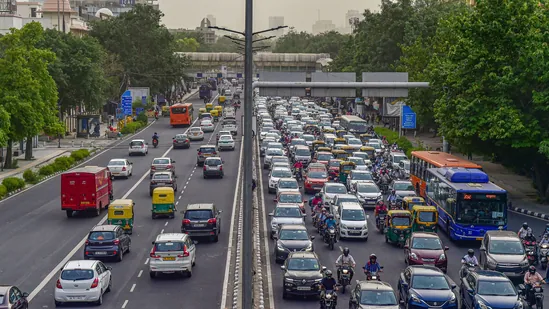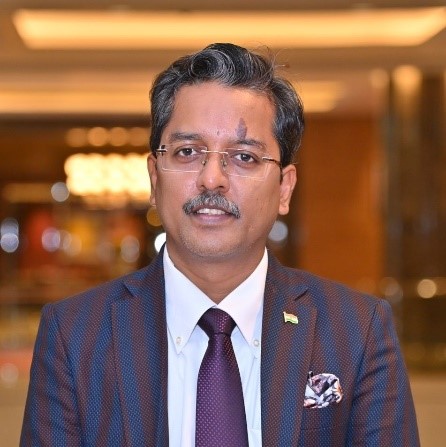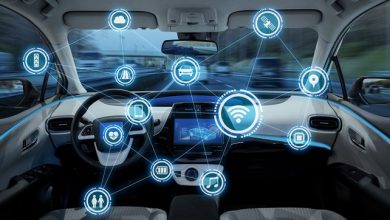Road Safety 2.0 on India’s priority list of surface transport modernization

Road traffic injuries (RTIs) are the leading cause of death globally for all ages and the first cause in the 5–29 years age group. Close to 1·5 lakh people die each year, and up to 4.5 are injured by RTIs. More than 60% of these deaths are attributable to vulnerable road users (i.e., pedestrians, cyclists, and motorcyclists).
Road traffic collisions reduce countries’ annual GDP by a range of 1–3%. India fares worst with the highest number of global road fatalities. With just only 1% of the world’s vehicles, India accounts for 11% of crash-related deaths, denting the Indian economy by nearly US$ 38.9 billion equivalent to 1.85% of GDP.
The traditional approach to road safety is not yielding the desired results, which is evident from the fact that despite some exciting & promising efforts like developing Zero fatality corridors, identifying & fixing blackspots, installing cameras for enforcement etc., the highest number of road fatalities took place in 2021.
Recently another valuable Indian life was lost on the road because safety was ignored. The death of Cyrus Mistry in a road accident is very unfortunate. But this isn’t the first time we have witnessed such a tragedy. A Maharashtra MLA recently died in a road accident. Cabinet Minister Gopinath Munde died in one such accident in 2014. Famous comedian Jaspal Bhatti met a similar fate in 2012. The unfortunate fatal road accident of Cyrus Mistry suddenly brought the media’s limelight on road safety. But the fact is that one life is lost on Indian roads every 4 minutes! Nearly 1.3 million people died on Indian roads in the past decade.
Where are we going wrong?
“Nothing works except in context, and finding out what works where and under what circumstances is a real scientific endeavour.” – Prof Angus Deaton
Mere copying western road safety solutions will not work on Indian roads where the problem is multi-layered. The traffic is not homogeneous like in western counties, In India over 60% of traffic constitutes two-wheelers. Unlike in western countries, the heterogeneous traffic on Indian roads constitutes pedestrians, cyclists, motorcycles, cars, buses, commercial vehicles, trucks, tractors and at times animals also. Similarly, in High-Income western countries maximum accidents revolve around cars but in India, two-wheelers and pedestrians are the most vulnerable road users with 60% of fatalities & injuries. The road safety measures of the western countries are more focused on safety measures within cars like seatbelts, airbags etc, whereas we need more focus on safety measures out of cars without compromising the inside safety measures. Therefore adopting western road safety parameters will not provide a human-centric solution in the Indian context.
An Indian solution is needed, which fits in our context of geo-socio-political scenarios and economic realities, where technology compensates for human limitations and encourages good drivers by creating a human-centric ecosystem.
We need to address the engineering & road design problems based on our traffic composition, there should be separate & enough lanes, foot over bridges, and flyovers for the two-wheelers & pedestrians as far as possible. Vehicle safety features should comprise both within the vehicle and out of the vehicle depending on the vulnerable road users.
Similarly, we need to improvise the enforcement system with our innovative solutions considering the complexity of enforcement in India due to the dense population, shortage of traffic police manpower, the huge cost of automated enforcement system and the challenging financial positions of most of the municipalities. We need a carrot & stick approach to enforcement using low-cost technologies within our means such as we can change driving behaviour by incentivizing good drivers rather than wasting time, energy & money on identifying & punishing bad drivers.
Identifying Road Safety & Risk Issues
Road safety has always been a complex and multifaceted issue. Despite many factors leading to fatal and non-fatal road injuries, the evidence identifies that four main risk factors consistently increase the risk for road injuries and deaths and are hence acknowledged by the WHO as major risk factors.
- speeding,
- drunk driving,
- helmet use, and
- use of seatbelt or child restraint
According to a study published in The Lancet journal, at least 30,000 lives in India could have been saved just by the implementation of simple road safety measures to prevent the above four main risk factors.
World Economic Forum-led Road Safety 2.0 pilots also reveal that majority of accidents are due to human errors and can be prevented with the use of technology to compensate for human limitations.
Besides human errors, the deficits in road engineering that create accident-prone spots and the sudden appearance of potholes and poor safety measures in the vehicles also contribute to the accidents. But the major reason remains the driving behaviour.
How to Improve
Having identified the major risk factors of road accidents, the next question comes how to improve the driver’s behaviour to ensure adherence to traffic rules.
The study reveals that the behaviour can be changed either by the fear of penalty through strict enforcement or by self-motivation through incentives. For a densely populated country like India, encouraging & self-motivating drivers for better driving through incentives & rewards can be a better option.
Reward Good Drivers
Road Safety 2.0 concept of tracking driver’s behaviour through IoT and converting it into easily understandable scores called Safe Driving Scores, which can be popularized Like CIBIL Scores by linking various road & vehicle-related incentives/financial benefits with it. Mandating Safe Driving Score for every DL holder can be a real game changer for road safety in India.
The success of World Economic Forum (WEF) led Road Safety 2.0 pilots, demonstrated that this theory is more effective with a drastic reduction in accidents.
Safe Driving Scores
The driver’s behaviour which is a subjective matter can be tracked using IoT and converted into scores on a real-time basis that may be called Safe Driving Scores.
Incentive schemes for encouraging SDS by linking it with all road & vehicle-related transactions such as rebates in Insurance premiums, rebates at vehicle workshops, and wayside amenities drivers like CIBIL score can be a game changer for road safety in India.
Ecosystem to Reward Safe Driving Scores
There is a need to create an ecosystem to reward these scores. For commercial vehicle drivers, this will generate a new revenue source for safe drivers as every transporter will prefer drivers with higher SDS, which will automatically create a ranking system of drivers based on their Safe Driving Scores.
Insurance companies who are the main stakeholders can now come forward due to regulatory modifications by IRDAI. This will reduce the dependency on third-party funding for road safety and will create a self-sustainable ecosystem.
Good Driving Scores mean better drivers, who will get more rebates in insurance premiums. Similarly, a good/careful driver will lead to lesser accidents and thus a lesser pay-out for insurance companies. Thus drivers will carve for higher Safe Driving Scores to get maximum rebates in the insurance premiums, thus will drive safety resulting in lesser road accidents.
A win-win for everyone.
Tech-Based Automated Enforcement System
However, the self-motivating measures for improving drivers’ behaviours alone mayn’t be a complete solution for road safety. Strict & transparent enforcement systems of traffic rules are equally essential. Both are complementary to each other.
The enforcement system needs to be automated, comprising speed cameras, incident detection cameras and ANPR systems, IoTs and high-end software for real-time detection of violations and issuance of automated penalty challans with a robust recovery system.
But the problem with an automated system is not the availability of technology but the availability of funds. The equipment and software of automated enforcement systems are firstly expansive and secondly require skilled manpower for flawless operations. Most Indian cities /municipalities don’t have enough financial resources. Here we require the PPP model.
How to implement an Automated Enforcement System on PPP Model
World Economic Forum did a pilot for the automated enforcement system on the PPP model and found it quite effective and economically viable.
The technology companies / OEMs are ready to bear the upfront installation cost and 5 to 7 years of operation & management cost through their skilled manpower and to recover their Capex & Opex cost as a fixed annuity or as a part of challans/penalty recovered by the government. This is not only financially viable but will also bring additional revenue to cities/municipalities in addition to improving road safety and providing a lot of job opportunities.
A win-win for everyone as with these measures, we can achieve our target to reduce road deaths by 50% otherwise the same old storey will continue once the social media euphoria is over on deaths in road accidents.
Author:

Abhijeet Sinha
National Program Director
Ease of Doing Business
Abhijeet Sinha is a Technocrat, currently National Program Director of Ease of Doing Business a leading emerging tech piloting agency. He started his journey from Modi’s Citizen from Accountable Governance (CAG) election campaign team in 2014 parliamentary polls, also participated in various Pilots like IMNCI (Asha-Anganwadi), National Population Register (NPR-CAA), UIDAI (Aadhar) and also Project Director of ambitious 5000 km e-highway pilot National Highway for EV (Jaipur – Delhi – Agra) for Govt of India.
Published in Telematics Wire





